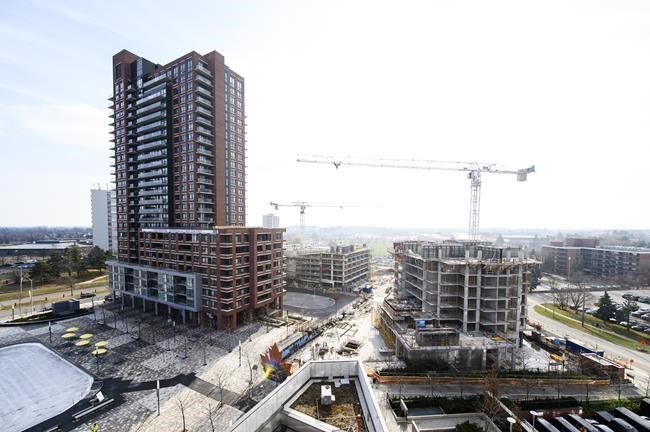OTTAWA — The federal government is eyeing underutilized Canada Post and National Defence properties as a way to deliver affordability and supply to the country's housing market.
In its federal budget released Tuesday, it announced plans to free up lands held by both entities in order to build housing at a pace and scale "not seen in generations" and help younger Canadians get into the real estate market.
The goal is creating a supply of 3.87 million new homes — adding two million net new homes to the 1.87 million the country was already on track to build — by 2031.
Such figures signal that the government thinks we need to double housing construction, said Mike Moffatt, the senior director of the Smart Prosperity Institute, a University of Ottawa-based think tank.
“I’m not sure that this (budget) gets us there, but it gets us a long, long way,” he said.
The Canadian Mortgage and Housing Corp. has said the country needs to build 3.5 million more homes by 2030 to restore affordability to levels seen in 2003 and 2004.
In order to close the gap between housing supply and demand, the Parliamentary Budget Officer has said the country needs to build 181,000 additional units on average each year until 2030, leaving the nation with 3.1 million net housing units.
To get to 3.87 million houses, the plan adds new initiatives meant to secure more land to build on to previously announced moves like 30-year amortization periods for first-time buyers, a ban on foreign investors, a crackdown on short-term rentals and a $400 million top-up to a $4 billion fund that fast-tracks construction.
One of the plan's cornerstones is freeing up vacant public land and leasing it to builders to build homes the party claims will be "affordable forever."
Some of that vacant public land will come from Canada Post, which is sitting on a portfolio of 1,700 post offices across the country.
The government said it is assessing six Canada Post properties — three in Quebec, two in B.C. and one in Alberta — for housing development potential and named another 33 areas where the mail service has land that could be used for building.
National Defence's 622 properties are also a target. Sites in Halifax, Toronto and Vancouver have been identified for either civilian or military uses and another 14 have been deemed surplus and ideal for housing. (To build 1,400 new homes for military members and renovate 2,500 existing units, $6.9 million has been allocated over the next four years.)
To smooth the ability to make use of public land, the budget proposes spending $5 million over three years on an overhaul of the Canada Lands Co., the Crown corporation that manages federal properties.
The Liberals imagine the overhaul could make it possible to transfer land from the federal government to Canada Lands for $1, wherever possible, cut approval times in half, bundle multiple properties to be transferred at once and provide long-term low cost leases for housing providers.
The government reasons that more land freed up for building will help push down housing costs for average Canadians, which it wants to see spend no more than 30 per cent of their income on shelter.
On Tuesday, Ratehub.ca estimated the minimum annual income required to buy an average home in some of Canada’s major cities was as high as $1.1 million in Toronto and Vancouver in March, when CREA found the average price of a home sold was $698,530.
That number is projected to climb 4.9 per cent on an annual basis to $710,468, more than double the hike the national housing group had predicted at the start of 2024.
That pace means homes are being kept "out of reach" for many first-time buyers, the budget concludes. Meanwhile, renters are having a hard time keeping up with costs too.
The budget said the average rent was up 8.2 per cent year-over-year in February, its fastest pace since the early 1980s.
To bring down prices, the government will aim to get more rental housing built for middle-income Canadians through the launch of Canada Builds.
The new initiative relies on partnering with provinces and territories to leverage $55 billion from the existing Apartment Construction Loan Program, which provides repayable, low-interest loans to developers and municipalities.
To access federal funding under the program, provinces and territories will have to show they are building on government, non-profit and vacant land, cutting development approval times and considering access to child care in the development process.
Canada Builds is modelled after a similar program in B.C.
Aside from supply, the budget was also speckled with rhetoric about investors who are profiting off real estate. At least six times in the 416-page budget, the Liberals said, "Homes are for Canadians to live in, not speculative assets for investors."
It was an allusion to investors, who the Bank of Canada estimates have snapped up one-third of home purchases between 2014 and 2022.
“There's a belief out there that many Canadians have that it doesn't really matter what you do on the supply side because those homes are just going to get bought up by investors and speculators,” Moffatt said.
“I think they needed to address that concern.”
This report by The Canadian Press was first published April 16, 2024.
Tara Deschamps, The Canadian Press



